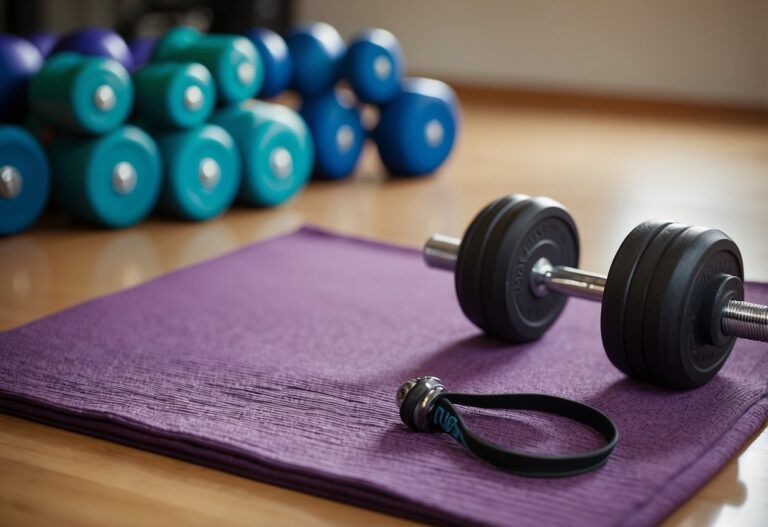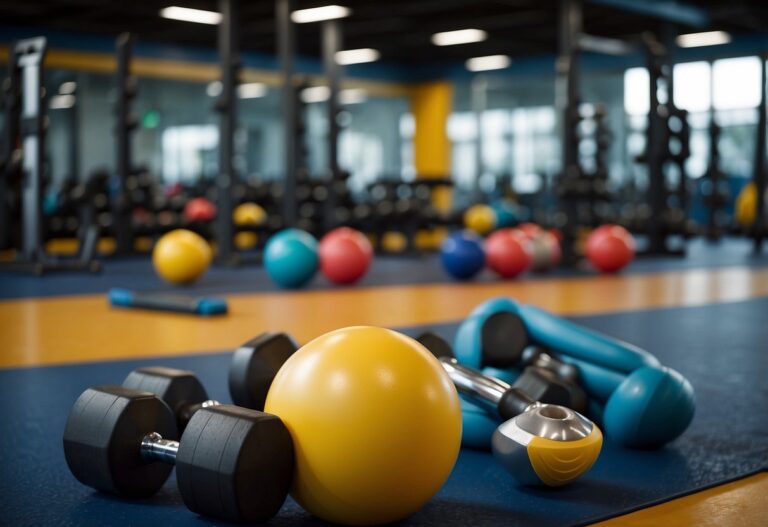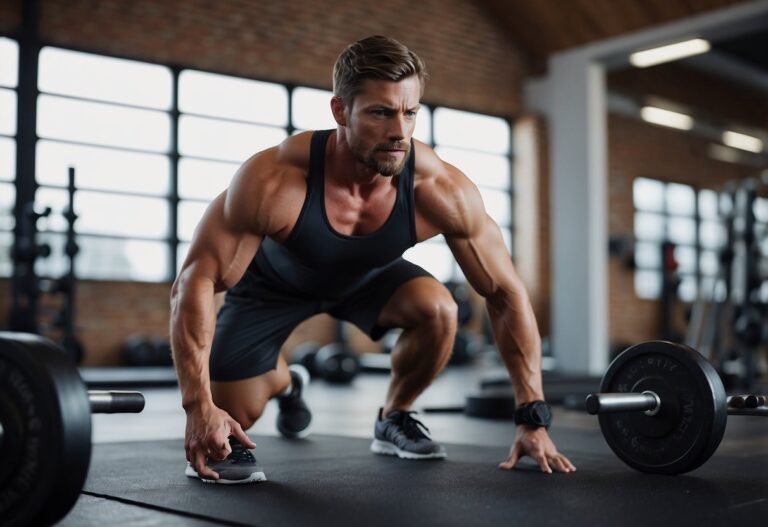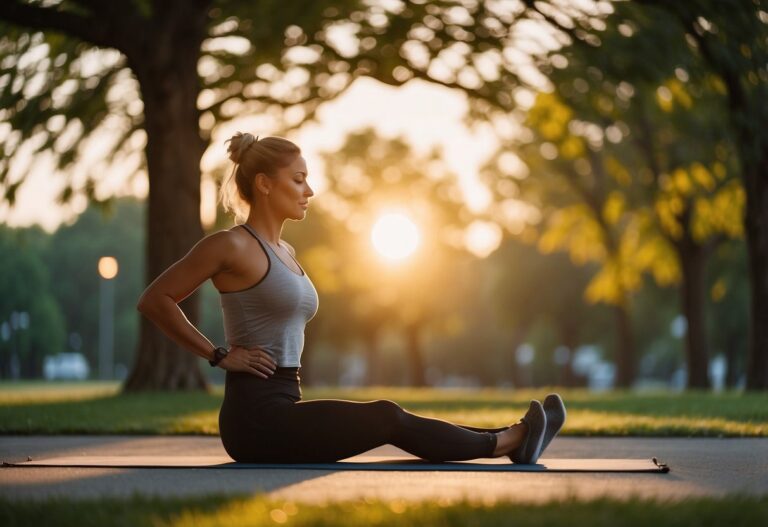Practising karate not only involves learning intricate movements but also requires a well-rounded fitness routine. Integrating various workout tips and ideas into your regimen can significantly improve your strength, flexibility, and endurance, contributing to your overall skill level. Whether you’re a beginner or an experienced practitioner, incorporating a variety of exercises will help you stay fit and enhance your martial arts performance.

Understanding how to mix different elements of fitness, such as strength training, cardiovascular workouts, and flexibility exercises, is crucial for karate practitioners. By doing so, you can ensure that you maintain a balanced and effective training plan that caters to all aspects of karate. This approach not only boosts physical health but also develops mental discipline, making your karate practise more effective and enjoyable.
Dynamic Warm-ups
Dynamic warm-ups are key to getting ready for Karate. They help increase your heart rate and improve flexibility.
Jumping jacks are a great way to start. They get your whole body moving and your blood pumping. Aim for 100 jumping jacks to get warmed up.
Next, try frog jumps. From a squat position, leap up like a frog. This opens up your hip flexors and warms up your ankles.
Joint rotations are important, too. Rotate your wrists, elbows, shoulders, hips, knees, and ankles. This boosts joint mobility and prepares you for Karate techniques.
Remember, dynamic stretching improves blood circulation and muscle elasticity. This means fewer injuries and better performance. Make these moves part of your routine to ensure your body is ready for training.
Shadow Boxing

Shadow boxing is a fantastic way to practise your karate skills without needing a partner. It helps you to improve your technique, speed, and stamina.
When shadow boxing, imagine an opponent in front of you. Throw a combination like a 1-2 (jab-cross), then step back and come back with a cross-left hook.
Try moving around the imaginary opponent. Incorporate body shots and head movements to enhance your agility. Visualise different scenarios to keep your training dynamic and engaging.
For more detailed shadow boxing workouts, check out this Sweet Science of Fighting guide.
Plyometric Exercises
Plyometric exercises are great for boosting your karate performance. They help you develop explosive power and speed, which are key in martial arts.
Jump squats are a fantastic start. They build strength in your legs and improve your jumping ability.
Clap push-ups are another good exercise. They work your upper body muscles and improve your hand speed.
Try lateral jumps. They enhance your agility and footwork, both essential for swift and precise movements in karate.
Adding these exercises to your routine can make a big difference in your martial arts skills.
Stretching Routines
To get the most out of your karate training, incorporating effective stretching routines is essential. Good flexibility helps improve your kicks and prevent injuries.
Front Lunge Stretch is a must-try. It boosts flexibility in your hips and thighs, making those high kicks easier. Hold the lunge position to feel a deep stretch.
Child’s Pose offers a gentle way to stretch your back and hips. Sit back on your heels and reach your arms forward, stretching your spine.
The Lizard Stretch is great for opening up your hips. Put one foot forward and bend your knee, keeping the other leg extended behind you.
You can find more stretches that are perfect for karate warming up at Karate Blog and Loyal Fighter.
Interval Training
Interval training is a great way to improve your karate skills and overall fitness. It involves alternating periods of high intensity with periods of rest or low intensity.
This type of training can help boost your stamina and improve your striking power. For example, you might do a minute of intense punching combinations followed by a minute of light jogging.
Another benefit is that it can be tailored to your fitness level. If you’re new, you can start with shorter high-intensity intervals and longer rest periods. As you get fitter, you can adjust the ratio.
Including interval training in your routine can make your workouts more engaging. By mixing it up, you can avoid the boredom that sometimes comes with more repetitive exercises.
Kata Practice
Practising kata is essential for mastering karate. Start by breaking down the kata into smaller sequences. Focus on specific movements to improve your technique. For example, practice just the first few steps until they’re perfect. This approach helps build muscle memory and precision.
A fun way to challenge yourself is by doing the kata 100 times in a row. This might seem intense, but it can significantly improve your stamina and consistency. Think of it as a test of both your physical and mental endurance.
Staying relaxed during kata is crucial. Relaxation allows you to generate more power and strike with greater speed. Tense muscles hinder your performance, so remember to stay calm and focused. Imagine your mind at ease, as if you’re meditating in motion.
Use these tips to elevate your kata practice and bring your karate skills to the next level. For more detailed advice, you can explore this guide on improving your kata practice.
Strength Training
Strength training is crucial for improving your karate skills. It helps you execute powerful strikes and movements. Incorporate compound exercises like push-ups, squats, and lunges. These exercises target multiple muscle groups, making your workout more effective.
Focus on balance. Work on both upper and lower body strength. Try weightlifting to build muscle mass and increase your power. Ensure you have proper form to avoid injuries.
Consider single-leg exercises to improve stability. These workouts engage your core and enhance overall balance. For instance, single-leg squats can be very beneficial.
You can find more details about effective exercises for martial artists on the Ultimate Karate Workout Guide.
Breathing Techniques
Proper breathing is essential in karate. It helps you stay focused, maintain energy, and perform better. Let’s look at a few effective techniques.
First, try belly breathing. Lie down and place a hand on your stomach. Inhale deeply through your nose, letting your belly rise. Exhale through your mouth, feeling your belly fall. This method can help calm your mind before intensive training.
Another technique to consider is ribcage breathing. Stand upright, inhale through your nose, and focus on expanding your ribcage rather than your stomach. Exhale slowly through your mouth. This type of breathing is great for maintaining stamina during longer sessions.
The 4-7-8 technique is also helpful. Inhale for 4 seconds, hold your breath for 7, and then exhale slowly for 8. This method is known to promote relaxation and reduce stress, which is useful when preparing for sparring or competitions.
Incorporating different breathing exercises into your karate routine can make a noticeable difference in your performance. Try these methods and see which works best for you.
For more details on these techniques, you can read about breathing correctly in karate or explore various breathing exercises for karate training.
Flexibility Drills
Dynamic stretching helps improve flexibility for karate. This involves moving parts of your body through a full range of motion. It actively engages your muscles and increases blood flow. Try leg swings or arm circles before practice.
The Lizard Stretch is another effective drill. It targets your hip ligaments and can be a bit challenging. To perform it, focus on doing the exercise slowly, even if your hips are tight.
Additionally, the Front Lunge Stretch is useful for karate. This stretch helps you deliver strong, quick front kicks more effectively, minimising the risk of injuries.
Speed Workouts
To improve your speed in karate, try incorporating burpees into your routine. These full-body exercises combine squats, push-ups, and jumps. They can help boost your endurance, strength, and speed.
Another excellent option is hill sprints. Running uphill builds leg strength and explosive power. You’ll also see improvements in your cardiovascular endurance.
Don’t forget plyometric training. These exercises, like jump squats and box jumps, help develop explosive power, which is crucial for quicker movements in karate.
Consider practising balance and stability exercises. By maintaining a steady centre of gravity and engaging your core, you can execute fast kicks more efficiently.
Remember to do a proper warm-up. Warming up your muscles with dynamic stretches and light cardio prepares your body for intense speed workouts and reduces the risk of injury.
Fundamentals of Karate Training

Understanding the basics of Karate involves mastering specific techniques and stances. These are crucial for developing the precision and power needed in various forms and practices.
Basic Techniques and Forms
In karate, basic techniques are the foundation of all advanced moves. Punches, kicks, and blocks are practised repeatedly to ensure accuracy and power. The straight punch or Oi-zuki is one of the first techniques you learn. Proper form involves keeping your elbow tucked and using your hips to drive the force.
Kicks like the Mae-geri (front kick) require balance and flexibility. Start by lifting your knee high and thrusting your foot forward. Practising these kicks regularly helps in building muscle memory.
Forms, or Kata, are sequences of moves that mimic fighting multiple opponents. Each Kata has specific patterns, and learning them disciplines your body and mind. Practising Kata enhances your coordination and helps you understand the practical application of basic techniques.
Importance of Proper Stances
Proper stances are vital for maintaining balance and ensuring powerful movements. The Zenkutsu-dachi (front stance) is commonly used. In this stance, keep your front knee bent and back leg straight, distributing your weight evenly.
The importance of stances cannot be overstated. They provide stability and the ability to shift quickly between offensive and defensive moves. For example, the Kiba-dachi (horse stance) strengthens your legs and improves balance. Practising this stance helps in transitioning smoothly during combat.
Stances also affect your centre of gravity, making it harder for opponents to knock you down. Regularly practising various stances will build strong leg muscles and improve your overall stability in karate.
Workout Ideas for Karate Practitioners
To enhance your karate skills, it’s crucial to focus on strength training, cardio workouts for endurance, and flexibility routines. Each of these aspects helps in improving your overall performance and stamina during training or matches.
Strength Training Exercises
Strength training is vital for building the muscles needed for powerful kicks and punches. Incorporate compound movements such as squats, deadlifts, and bench presses. These exercises target multiple muscle groups at once, making your workouts more efficient.
Including push-ups and pull-ups will strengthen your upper body and core. Aim for three sets of each exercise, with 8-12 repetitions per set. Gradually increase your weights each week to continue challenging your muscles.
Using resistance bands can also add variety to your strength training. They help increase muscle tension and can be used for exercises like band punches and knee strikes.
Cardio Workouts for Endurance
Cardiovascular fitness is essential for sustained energy during karate sessions. Work on your endurance by incorporating activities like running, cycling, or swimming into your routine. These exercises enhance your cardiovascular health, which is crucial for maintaining high energy levels in matches.
Try interval training where you alternate between high-intensity and low-intensity exercises. For example, sprint for 30 seconds, then walk or jog for a minute. Repeat this cycle for 20-30 minutes.
Practising shadowboxing is another great cardio exercise. It mimics the actual movements in karate, helping you build stamina while improving your technique.
Flexibility and Stretching Routines
Flexibility is key in karate to perform high kicks and agile movements. Ensure you have a dedicated stretching routine both before and after your workouts. Dynamic stretches, like leg swings and arm circles, are excellent for warming up.
Post-training, focus on static stretches to improve flexibility. Hold each stretch for at least 30 seconds. Pay special attention to your hamstrings, calves, and hip flexors, which are heavily used in karate.
Incorporating yoga poses such as the downward dog and warrior pose can also enhance your flexibility. These poses not only stretch your muscles but also improve your balance and control, both crucial for effective karate practice.
Advanced Karate Tips
Advancing in karate requires a combination of physical prowess and mental discipline. Improving your speed and agility while maintaining sharp mental focus is key to mastering advanced techniques.
Improving Speed and Agility
To get faster and more agile, you should focus on specific drills and exercises. Quick footwork drills, like ladder exercises, help enhance your speed and coordination. Try incorporating these drills into your routine regularly.
Plyometric exercises, such as jump squats and box jumps, build explosive power. These movements improve your ability to move quickly and powerfully during sparring and katas. Make sure to perform them with proper form to avoid injury.
Balance is crucial. Incorporate activities like single-leg exercises or balance board training to enhance your stability. This will help you move more fluidly and respond quicker during combat situations.
Consistency is key. Regularly engaging in these exercises will significantly improve your overall agility and speed, making advanced techniques easier to perform.
Mental Focus and Discipline
Karate is as much about the mind as it is about the body. Improving your mental focus begins with meditation and mindfulness practices. Spend a few minutes each day meditating to enhance your concentration and calmness.
Visualisation techniques help you prepare mentally for executing complex moves. Imagine yourself performing the techniques flawlessly to build confidence and mental readiness.
Practising self-control is vital. Engage in exercises that test your patience and discipline, such as holding a difficult stance for extended periods. This builds mental stamina.
Incorporate deep breathing exercises to manage stress and maintain focus. Whenever you face a challenging situation in training or competition, these techniques will help keep your mind sharp and focused.
By integrating these mental practices into your routine, you’ll enhance your ability to stay focused and disciplined, essential traits for any advanced karate practitioner.







